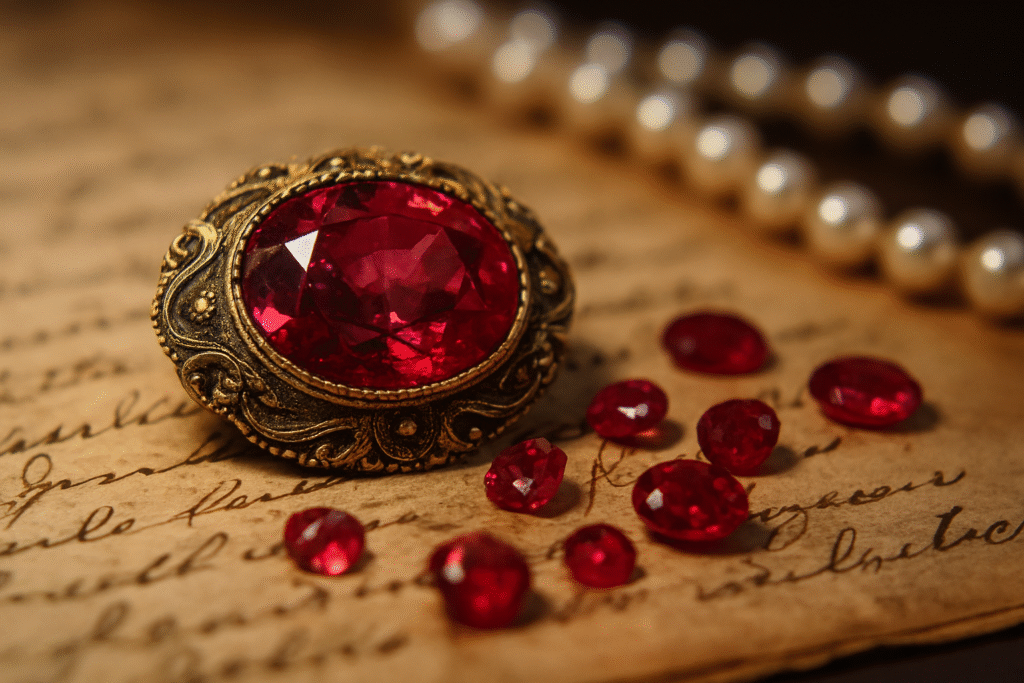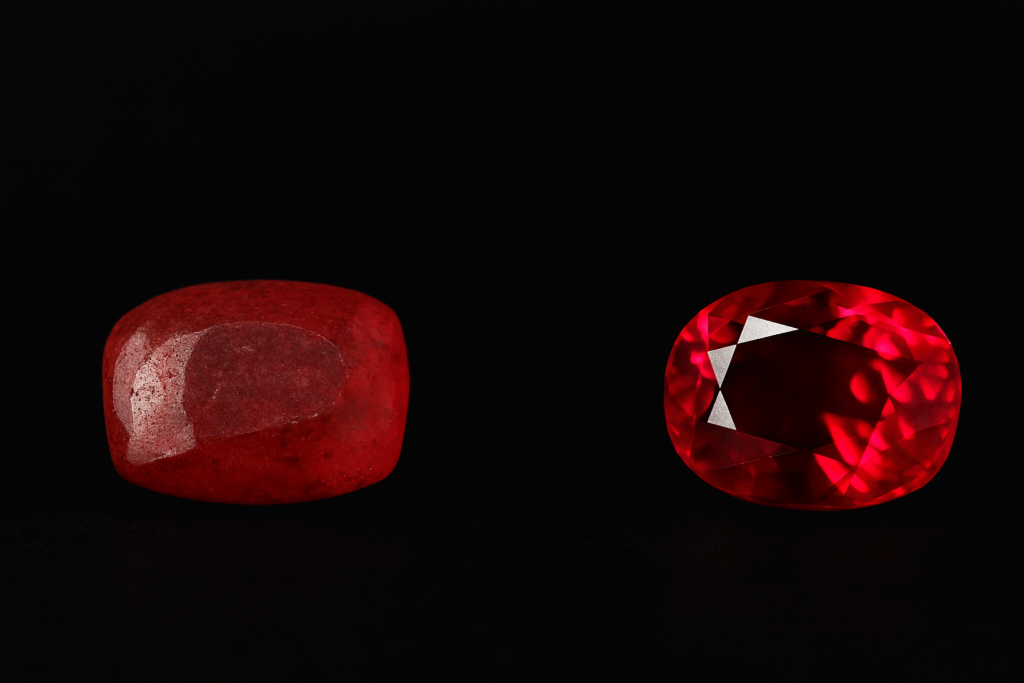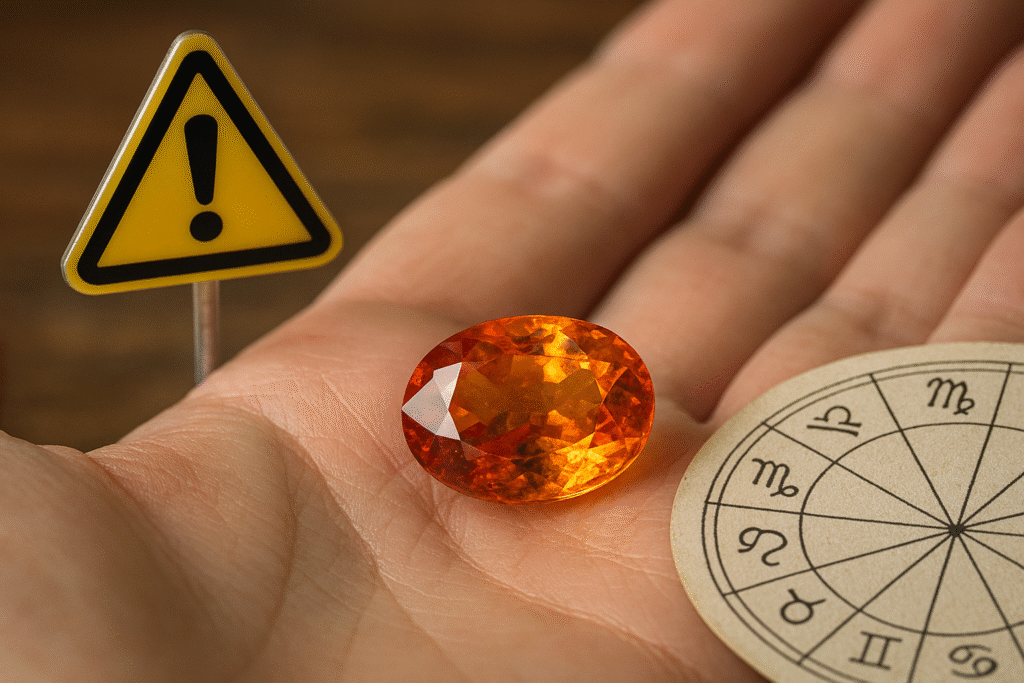Table of Contents
- Introduction
- What Is the Hidden Value in Old Cut Rubies?
- Why Recutting Old Cut Rubies Can Lower Value
- Auction Results That Prove the Value of Vintage Cuts
- Expert Advice on Preserving Vintage Ruby Cuts
- FAQs
Introduction
The hidden value in old cut rubies often surprises families. Many inherit a cushion or European cut ruby and immediately consider recutting. However, pausing to evaluate the gem first can reveal hidden benefits. In fact, preserving the original cut often increases both historical significance and market value. Additionally, collectors consistently pay higher prices for gems that retain their antique charm.
What Is the Hidden Value in Old Cut Rubies?
First, old cuts reflect craftsmanship from earlier centuries. They were designed for candlelight, which gives them a warm glow. As a result, these rubies stand apart from modern brilliants. Moreover, collectors prize authenticity, and auctions consistently confirm the strong demand for vintage cuts. Therefore, keeping the original style can significantly impact resale value.
Why Recutting Old Cut Rubies Can Lower Value
When you recut a ruby, you actively reduce carat weight. Even a 10–15% loss can significantly lower resale prices. Furthermore, reshaping erases the historical style that makes the gem special. Because of that, many experts recommend preserving the original cut. For example, reshaped heirlooms often lose market appeal despite improved sparkle.
Auction Results That Prove the Value of Vintage Cuts
- Sotheby’s sold a Burmese cushion ruby for 35% more than a recut equivalent.
- Likewise, family heirlooms I appraised in India lost half their market value after reshaping.
- In fact, market research shows vintage rubies in original cuts typically sell 20–40% higher than modified stones.
Expert Advice on Preserving Vintage Ruby Cuts
With over 40 years of global gemstone experience, I have learned this: “The key is to respect the cut your gemstone already carries.” Additionally, preserving old cuts protects both history and market value. Finally, collectors recognize and reward authenticity, which modern recuts rarely match.
Related Articles:
- To buy gems wisely, see Gemstone Buying Pitfalls Every Collector Should Avoid.
- To understand jewelry quality, visit Understanding BIS Hallmark: What It Means for Your Jewellery.
Explore More Here:
Auction data from Sotheby’s and Christie’s confirms ongoing demand for old cuts.
FAQ
Q1. What is the hidden value in old cut rubies?
The hidden value in old cut rubies comes from history, craftsmanship, and rarity. Vintage cuts often sell 20–40% higher than recut stones.
Q2. Should I recut my old ruby?
No, unless it is badly damaged. Recutting actively reduces carat weight and diminishes historical value.
Q3. How can I identify an old cut ruby?
Look for cushion-like shapes, high crowns, and deep pavilions. A gemologist can verify authenticity.
Q4. Where can I sell an old cut ruby?
Sell through auction houses or certified dealers that value vintage cuts.
Q5. Why do collectors pay more for old cut rubies?
Collectors actively seek authenticity and rarity. Original cuts preserve historical craftsmanship.
This comprehensive global cuisine FAQ covers everything about Asian and Western food and drinks. Whether you’re exploring international cooking techniques or discovering new flavors, this global cuisine FAQ answers the most frequently asked questions about world food traditions, ingredients, and culinary practices from both Eastern and Western cultures.
Global Cuisine FAQ: Asian & Western Food & Drinks
Food reveals cultural contrasts in clear and delicious ways. From cooking methods to dining customs, Asian and Western cuisines showcase unique traditions while also offering fascinating overlaps. Below, you’ll find answers to the most common questions about these culinary worlds.
Understanding Core Differences in Cuisine
1. What distinguishes Asian and Western culinary traditions?
Asian meals often rely on rice or noodles as a foundation. Flavors usually come from soy sauce, ginger, garlic, and a wide variety of spices. Meanwhile, Western gastronomy emphasizes bread, potatoes, and pasta. Dairy plays a key role, with butter, cream, and cheese giving richness to many dishes. Herbs such as rosemary and thyme highlight European cooking. These contrasts create distinct dining habits and flavor profiles.
2. Are Asian dishes always spicy?
No, not at all. While cuisines from Thailand and parts of India feature bold use of chilies, not every dish follows this pattern. Japanese sushi, Chinese dim sum, and Korean bulgogi are mild examples. In fact, Asian cuisines range from fiery to delicate, showcasing a rich palette of flavor.
Western Breakfast Staples and Comfort Foods
1. What constitutes typical Western morning meals?
Western breakfasts often include eggs, bacon, and toast. Pancakes, waffles, and cereal are also popular choices. These hearty starts are usually enjoyed with coffee, tea, or juice, providing both energy and comfort.
2. What represents popular Western comfort foods?
Comfort foods in the West speak to nostalgia and indulgence. Creamy macaroni and cheese, pizza, and hearty casseroles are favorites. Similarly, burgers and fried chicken have wide appeal. Because they are warm, filling, and familiar, these dishes strongly connect to emotion.
Cultural Dining Practices
1. Do all Asian cultures employ chopsticks?
No. Chopsticks dominate in East Asia—China, Japan, and Korea. However, Southeast Asia prefers spoons and forks, while India and parts of the Middle East often use flatbreads or hands. This diversity highlights how food customs closely reflect culture.
2. Why are some Asian foods fermented?
Fermentation preserves food while also enhancing nutrition and flavor. Korean kimchi, Japanese miso, and Indonesian tempeh show how tradition meets health benefits. These foods are valued not only for taste but also for their role in well-being.
Common Western Beverages
1. What beverages are common with Western meals?
Western dining often features water, soda, or fresh juice. Alcohol also has a strong cultural connection, with wine served at European dinners and beer central in North America. In the southern United States, sweet iced tea is a staple.
Dietary Flexibility and Options
1. Can one discover plant-based options easily?
Yes. Asian cuisines offer tofu stir-fries, lentil dals, and vegetable curries that are naturally vegetarian. Western food, similarly, embraces plant-based eating. Salads, vegetarian pastas, and vegan burgers have grown popular, making meat-free dining accessible worldwide.
Unique Asian Drinks to Explore
1. What are some unique Asian beverages?
Asia provides a wide variety of distinctive drinks. Bubble tea, from Taiwan, combines tea with chewy tapioca pearls. Japanese sake, made from rice, holds deep cultural meaning. Strong Vietnamese iced coffee, sweetened with condensed milk, adds a bold twist compared to Western brews.
Portion Sizes and Dining Habits
1. How do portion sizes compare?
Western meals often emphasize large servings, reflecting abundance. By contrast, Asian meals are usually smaller yet balanced, encouraging sharing and mindful eating. This creates different social experiences around the table.
The Art of Fusion Cuisine
1. Is it feasible to integrate Asian and Western flavors?
Absolutely. Fusion cuisine blends traditions in creative ways. For instance, teriyaki burgers combine Japanese flavors with American fast food, while kimchi tacos bring Korean spice to Mexican street food. These playful mixes show how food bridges cultures.




